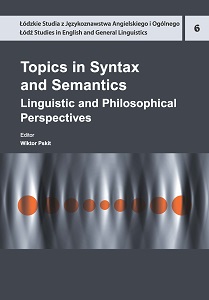Author(s): Adam Orlik / Language(s): Polish
Publication Year: 0
Adam Orlik’s chapter is dedicated to the analysis of the significance of the dark, stalker figure of contemporary popular culture. From literature to film to video games, the enigma of the stalker figure has taken hold. This figure has taken many roles in ourculture. In the Strugatsky brothers’ short novel, Roadside Picnik, the stalker is depictedas a type of science fiction hero. This was then followed by the 1979 film Stalkerby the famous Soviet film-maker, Andrei Tarkovsky. Stalker won a few internationalfilm awards and it brought recognition to the stalker figure in popular culture. The chapter introduces the reader to the so-called “stalkers’ universes” featuring a new andenigmatic hero—the stalker. He is a seeker, much like the trackers of the old WildWest, able to seek out and find anything any one needs in the most difficult, inaccessibleand dangerous terrains. The stalker has many facets. An adventurer, an explorer,a traveler who ventures into landscapes marred and destroyed by nuclear war andother catastrophies. In this post-apocalyptic world, the stalker is the one who goes beyondthe boundaries of the known frontier and human knowledge. It is he who fillsthe white voids on the map. This unlikely hero is also a warrior, forced into combatwith fierce creatures, mutants and other humans residing in this post-apocalypticworld. Thus, the stalker character in post-apocalyptic fiction works comes to resemblethe figure of the cowboy in westerns. The stalker is associated with uninhabited openspaces, adventure and discovery of the “New World”. However, there are inherentrisks which may either culminate in great rewards or, quite the contrary, sudden death.Above all, the stalker embodies the vision of the “stranger from unknown lands” who,more often than not, becomes the reluctant hero.
More...


